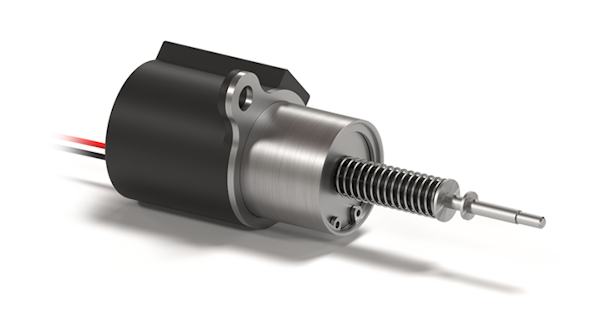Integrating Fail-Safe Technology with Electromagnetic Components
Although latching solenoids have been available for many years, they are receiving a new wave of interest that is being driven by the current focus on energy efficiency, due in part to cost savings, environmental concerns, and power availability; the adaptability of these solenoids to a wide variety of applications; and lastly, technology has now advanced enough to allow for fail-safe functionality in the small package size that design teams often require. Integrating fail-safe functionality to latching solenoids will be the focus of this tech brief.
First, it is important to review how latching solenoids work and why they are so energy efficient. Latching solenoids draw very little power because they do not require constant power to maintain a commanded state. This makes latching solenoids ideal for applications with a low cycle rate. Only a short pulse of power is needed to move the armature into either the latched or de-latched position. A pulse of power of one polarity is used to move the armature into the latched position. The armature is then held in position either by a permanent magnet or residual magnetism (depending on the solenoid’s design). A pulse of power of the opposite polarity cancels the magnetic hold, and the armature is driven back to its base position by a spring, although other means can be used as required by the application.

Low power draw, and the resulting low heat generation, have made latching solenoids an attractive solution for many applications. However, some designers are concerned about using them in applications where a loss of power presents possible safety concerns. As already mentioned, the armature in a latching solenoid cannot move without power. This is a real problem if the safe position is different than the solenoid’s last commanded position. The solution is to integrate a fail-safe to the solenoid.
The fail-safe is simply an integrated capacitive discharge circuit. When power is applied to the solenoid, the capacitor is charged in parallel. Even though the solenoid only requires a short pulse of power to change state, the capacitor continues to receive a constant voltage signal to maintain charge, but it draws nearly zero current. If power is lost to the capacitor, the capacitor discharges and moves the armature to a customizable safe position.
The location of the fail-safe is also customizable. The fail-safe can either be installed on the solenoid’s power wires or mounted directly to the solenoid. The latter is the best and most reliable option because if the power wires between the fail-safe and solenoid are damaged, the fail-safe will not function. With the fail-safe mounted directly to the solenoid, damage to the power wires will not disable the fail-safe.
The integration of fail-safe functionality opens the door for latching solenoids to a range of applications where previously they might not have been used. For example, a battery disconnect solenoid could be designed for EVs and HEVs so that in the event of a collision, the lithium-ion battery would automatically disconnect to prevent accidental electrocution of vehicle occupants or first responders. Even if power is lost to the battery disconnect, the fail-safe would still actuate the solenoid, disconnecting the battery.
This article was originally published by TLX Technologies in February 2020
Want to explore design examples?
TLX Technologies is the go-to custom solenoid partner of the world’s top brands, first-tier suppliers, and OEMs